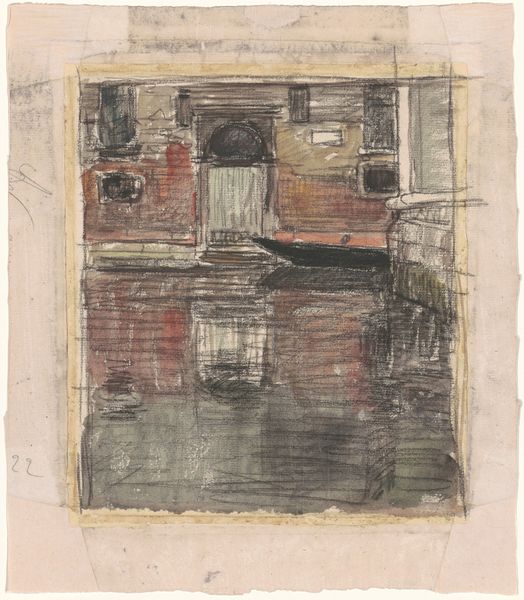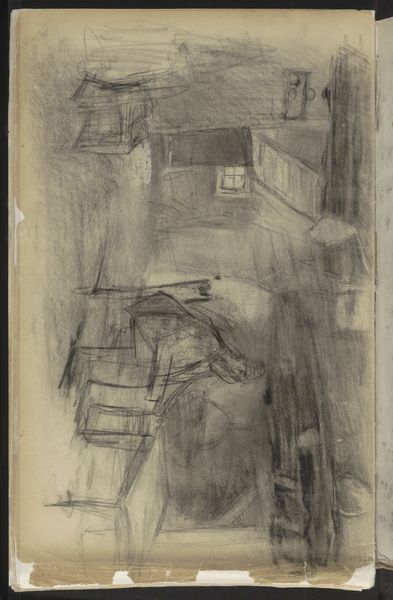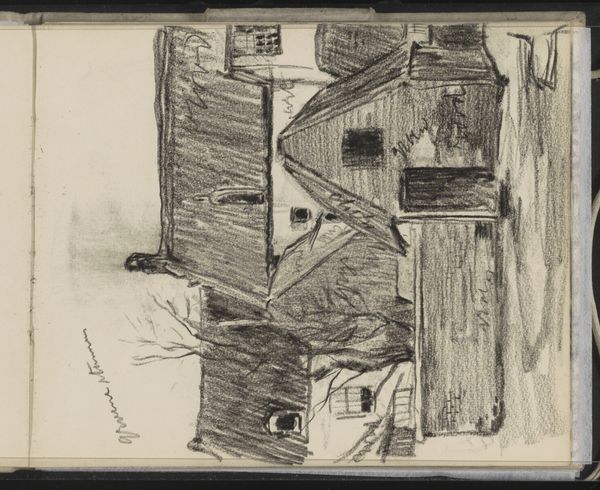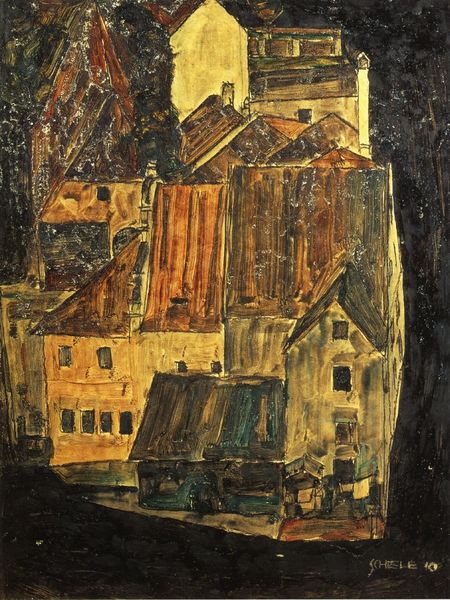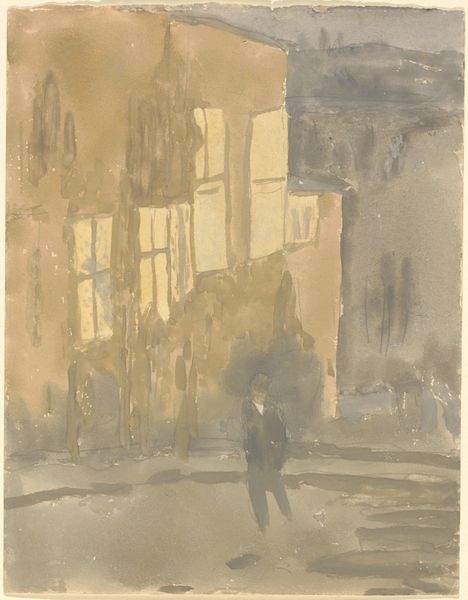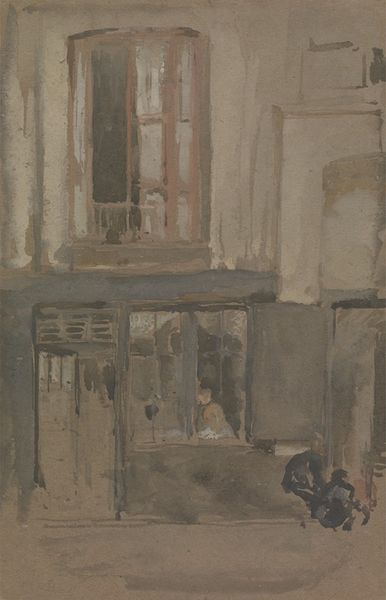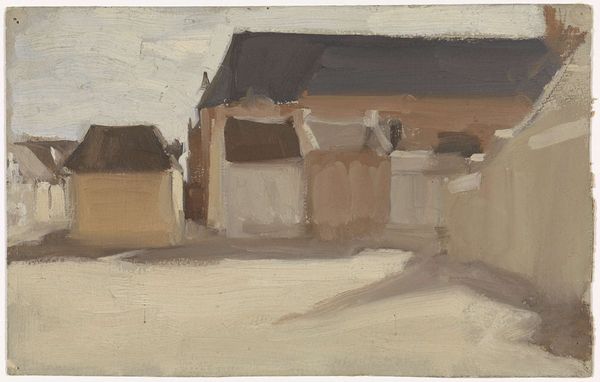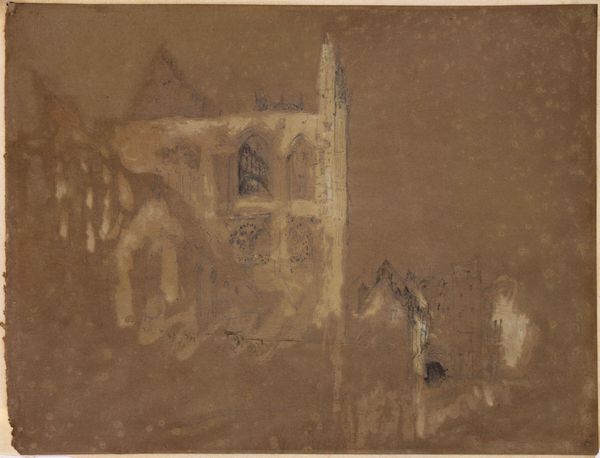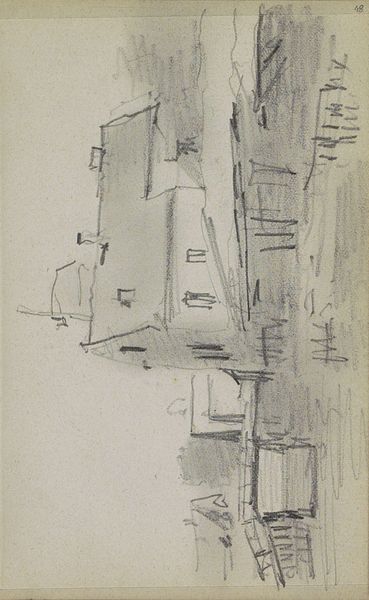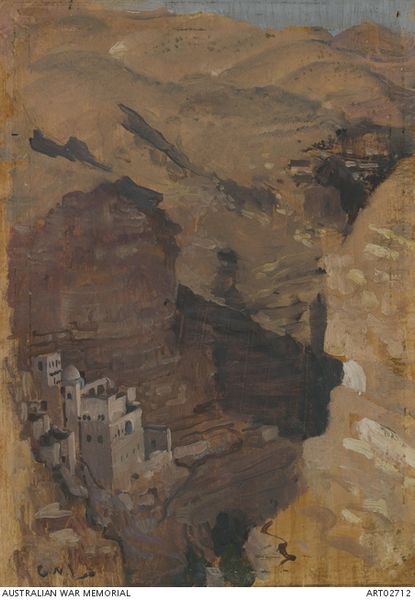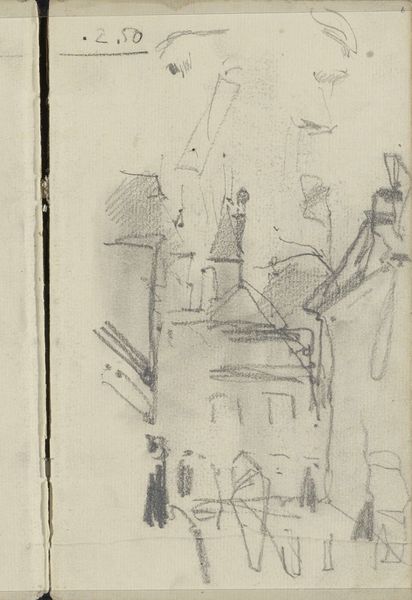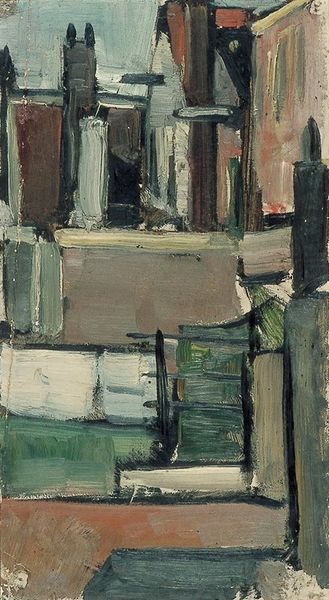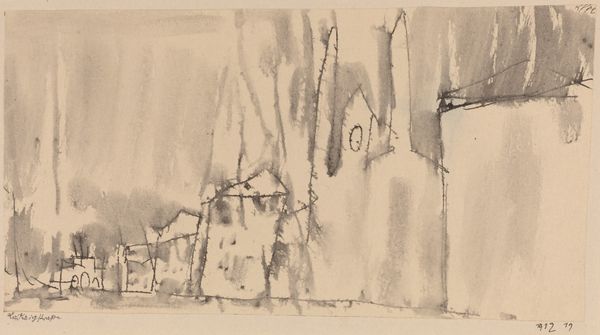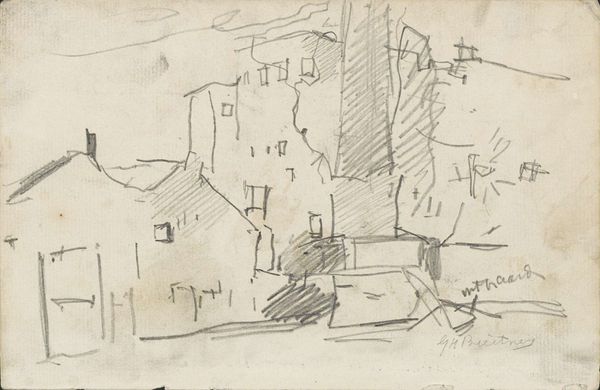
Dimensions: height 21.5 cm, width 16 cm, depth 5.5 cm
Copyright: Rijks Museum: Open Domain
Curator: Breitner's "Street in Montmartre, Paris," created sometime between 1880 and 1923, captures a quiet moment in the bustling city. He uses oil paint, and from what I can see, it also looks like impasto was used to create texture, to depict a streetscape that feels both intimate and slightly distant. Editor: The first thing I notice is the light. Or perhaps, the lack thereof. It's quite muted, creating an atmosphere that feels almost melancholic, despite being a cityscape. The high vantage point emphasizes the structures, presenting them as barriers or divisions. What's the historical context here? Curator: This piece reflects a changing Paris. During this period, Montmartre was transforming from a semi-rural village to a more urban landscape, as industrial expansion drove migration. Artists like Breitner were capturing the social consequences of rapid modernization. His painting really shows us a moment where old meets new. Editor: It is as though Breitner wants to portray his vision of Paris, and the city's struggle in that in-between period of existence, right before urbanization took complete hold of the area. I also find the palette restrictive, I wish the building that stands out the most wasn’t painted with such an eccentric green tonality. Is this a potential nod to rising pollution at the time, the buildings succumbing to environmental constraints? Curator: That's a valid interpretation, given Breitner's involvement in social issues through his art. Pollution definitely transformed urban landscapes during the era and its repercussions, but one might as well note that Breitner himself became increasingly critical of his own involvement, for fear of the spectacle. Yet here in this rendition, it is not really a direct response, but rather an aesthetic sensibility toward what it meant living through those evolving times, capturing the emotional response in doing so. Editor: Even if subconscious, such visual representations carry great weight, don't they? This piece truly becomes a complex blend of urban realism, social commentary, and the internal reflections of the artist navigating a changing world, while struggling himself with the very thing he is doing. Curator: Precisely. Through art historical lenses we witness socio-political dimensions unfold, but what the painting shows us as well is this very struggle. Editor: It definitely makes one pause to reconsider our role as onlookers, not just to the past, but to our present as well.
Comments
No comments
Be the first to comment and join the conversation on the ultimate creative platform.
